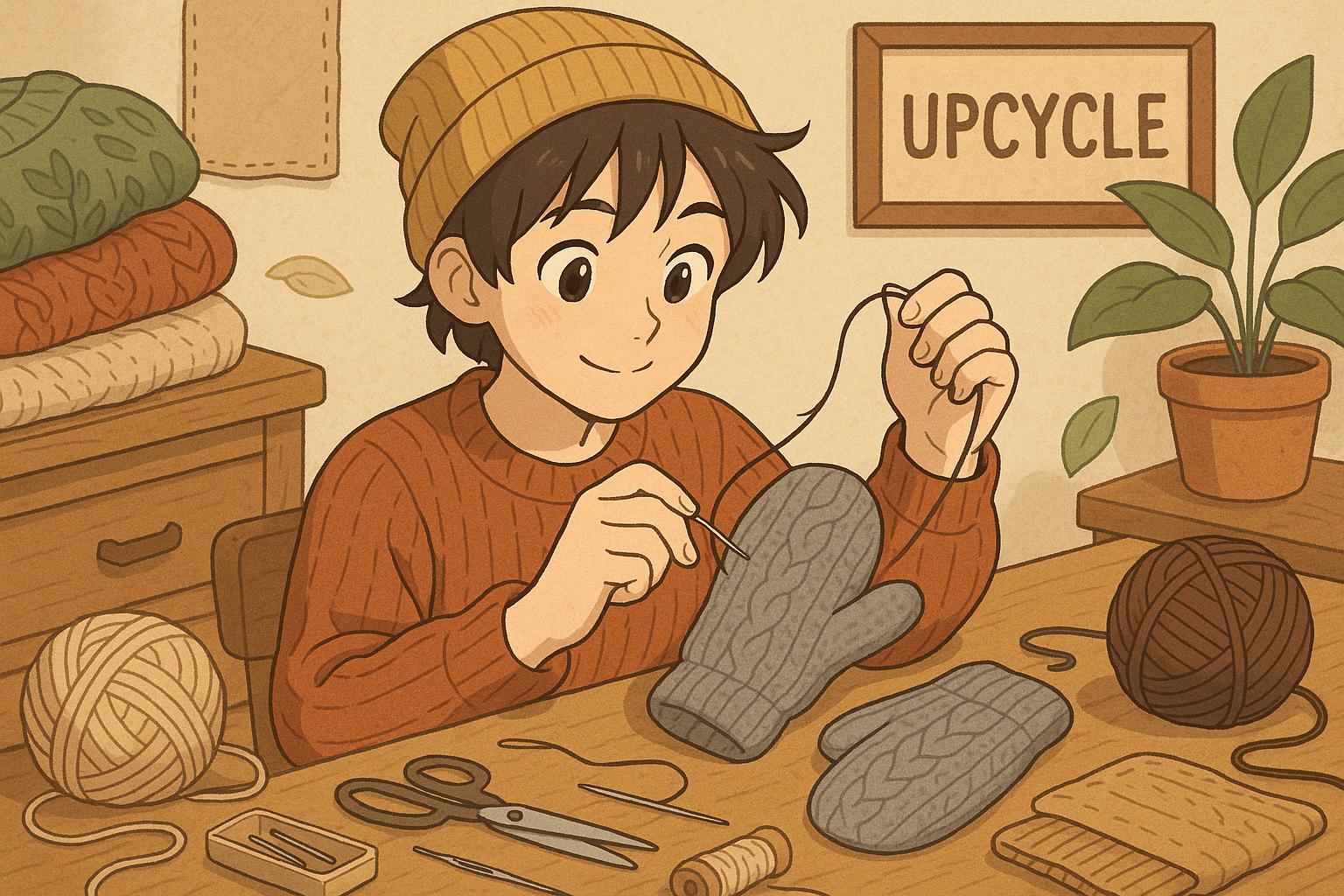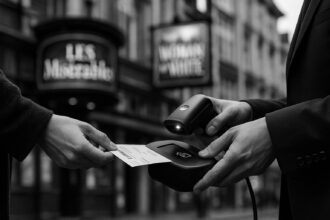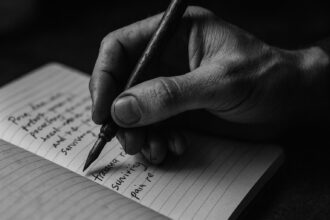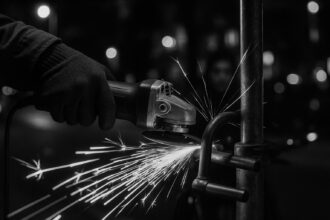A Reddit user’s simple method of creating warm mittens from shrunken sweaters and wool socks has ignited a wave of community interest in accessible upcycling, highlighting its role in reducing textile waste and inspiring new sustainable fashion practices.
Upcycling has emerged as a compelling alternative to fast fashion, effectively redirecting textiles from landfills and reshaping our understanding of sustainable fashion. A recent Reddit post showcased just how accessible this creative endeavour can be. Demonstrating a flair for innovation, a user shared their experience of crafting warm mittens from the sleeves of a shrunken wool-blend sweater combined with wool socks. With no formal pattern, the user simply hand-stitched around the edges, affirming that anyone can undertake such a project, regardless of their crafting skills. “Thanks so much! But it’s not like I knitted them from scratch. It was easy,” they noted, dispelling the notion that upcycling requires expert techniques.
The positive reception of their project revealed a community eager for inspiration in sustainable fashion practices. Fellow Redditors marvelled at the mittens’ attractive appearance and praised the inventive use of an old sweater, sparking a wave of enthusiasm and additional ideas. This illustrates the broader appeal of upcycling, which not only breathes new life into garments but also results in distinctive, one-of-a-kind pieces—a sentiment echoed in numerous discussions about sustainable crafting practices.
Indeed, upcycling has significant benefits extending beyond aesthetics. It promotes a circular economy by reusing materials, thereby reducing waste and the demand for new production. The creative process can also yield substantial financial returns, as upcycled items gain popularity—suggestions for the original poster included opening an Etsy shop to sell their crafts. This potential for profit aligns with various platforms, such as ThredUp, which enable users to earn money from secondhand clothing while fostering a culture of circular consumption.
In discussing their creation, the user highlighted an aspect that set their mittens apart from typical commercial offerings: the comfort provided by thick wool socks used as lining. The result was a product they claimed was “even better than store-bought” alternatives, with warmth that rivalled high-end brands such as North Face. The personal satisfaction derived from making something both functional and beautiful—in this case, mittens warmer than conventional ski gloves—epitomises the essence of upcycling.
Upcycling projects are limited only by creativity and ambition. Alongside mittens, there are a multitude of possibilities, from crafting matching accessories like hats and scarves to transforming old sweaters into functional home decor. Comprehensive tutorials are readily available online, offering guidance on how to ensure each piece is both stylish and functional. For instance, step-by-step guides can equip beginners with the knowledge needed to create mittens that combine durability with aesthetic appeal—many recommend techniques such as using felted wool for enhanced warmth and employing zigzag stitches for added strength.
As this DIY movement continues to grow, it encourages individuals to rethink their relationship with fashion and consumer goods. The allure of crafting unique, upcycled items not only fills a wardrobe but also fosters a sustainable mindset, making it easier for individuals to participate in a more responsible approach to consumption. Upcycling is not merely a trend; it serves as a catalyst for widespread change in how we view and engage with fashion.
Ultimately, such initiatives reflect a transition towards sustainability, showcasing how simple actions can significantly impact personal consumption and the environment. Whether through community inspiration or DIY guides, the pathway to stylish upcycled creations is open for all, presenting a fulfilling way to contribute to the planet’s well-being.
Reference Map
- Paragraphs: 1, 2, 3, 4, 5, 6, 7
- Paragraphs: 1, 2, 3, 4, 5
- Paragraphs: 4, 5, 7
- Paragraphs: 5, 6
- Paragraphs: 5, 6
- Paragraphs: 5, 6
- Paragraphs: 6, 7
Source: Noah Wire Services
- https://www.thecooldown.com/green-home/upcycled-mittens-wool-sweater-sleeves/ – Please view link – unable to able to access data
- https://www.thecooldown.com/green-home/upcycled-mittens-wool-sweater-sleeves/ – An article highlighting a Reddit user’s creation of warm mittens using shrunken wool-blend sweater sleeves and wool socks. The user shared photos and described the process as simple, involving hand-stitching without a template. Fellow Redditors praised the upcycled gloves, noting their beauty and the innovative use of old sweaters. The article emphasizes the benefits of upcycling in promoting a circular economy and creating unique, one-of-a-kind fashion pieces.
- https://www.thefrugalnavywife.com/upcycle-sweater-mittens/ – A DIY guide on transforming old sweaters into cozy mittens. The tutorial provides step-by-step instructions, including turning the sweater inside out, cutting the sleeves to the desired length, measuring and tracing the hand, sewing around the mitten shape, and finishing the edges. The article also suggests other upcycled crafts, such as scarves, boot socks, and hats, encouraging readers to repurpose old sweaters into stylish and functional items.
- https://www.viaverdefarm.com/onlineshop/up-cycled-sweater-mittens – An online shop offering handmade mittens crafted from upcycled sweaters. The mittens feature cuffs made from Merino wool grown on the farm and are lined with black fleece for added warmth. Available in various sizes and colors, these mittens showcase sustainable fashion by repurposing old sweaters into functional and stylish accessories.
- https://www.heatherhandmade.com/how-to-make-sweater-mittens/ – A tutorial on upcycling old sweaters into mittens. The guide covers selecting a suitable sweater, cutting the sleeves to fit the hand, tracing the hand shape with seam allowance, sewing the mitten pieces together, and finishing the edges. The article also suggests using the remaining sweater fabric to create matching accessories like hats and scarves, promoting sustainable fashion practices.
- https://www.thelaststitch.com/sew-mittens-using-a-recycled-sweater/ – A detailed tutorial on sewing mittens from a recycled sweater. The guide includes using a specific sewing pattern, cutting the sweater pieces, sewing the thumb to the palm, preparing the cuffs, and attaching them to the mittens. The article emphasizes the use of a narrow zigzag stitch for stretch and durability, providing a comprehensive step-by-step process for creating mittens from old sweaters.
- https://homesongblog.com/autumn/upcycled-wooly-mittens/ – A step-by-step guide on creating upcycled wool mittens. The tutorial includes tracing the hand onto paper, cutting out the mitten shape from a shrunken sweater, and sewing the pieces together. The article emphasizes the use of felted wool for durability and warmth, encouraging readers to repurpose old sweaters into functional and stylish mittens.
Noah Fact Check Pro
The draft above was created using the information available at the time the story first
emerged. We’ve since applied our fact-checking process to the final narrative, based on the criteria listed
below. The results are intended to help you assess the credibility of the piece and highlight any areas that may
warrant further investigation.
Freshness check
Score:
8
Notes:
The content discusses a recent Reddit post and current trends in upcycling, suggesting freshness. However, the general theme of upcycling is not new, and specific details about the Reddit post are not provided.
Quotes check
Score:
9
Notes:
The quote appears to be from a Reddit user and is not found in earlier online sources, suggesting it might be an original quote.
Source reliability
Score:
6
Notes:
The narrative originates from a specific online publication, The Cooldown, which is not a well-known reputable news source like BBC or Reuters. While it discusses real trends in upcycling, its reliability is less certain.
Plausability check
Score:
9
Notes:
The claims about upcycling and its benefits are plausible and align with current sustainability trends. The narrative is consistent with known practices in DIY crafting.
Overall assessment
Verdict (FAIL, OPEN, PASS): OPEN
Confidence (LOW, MEDIUM, HIGH): MEDIUM
Summary:
While the narrative discusses plausible and current trends in upcycling, its reliability is somewhat uncertain due to the source. The freshness and plausibility are high, but quotes are original and not found in other sources.













